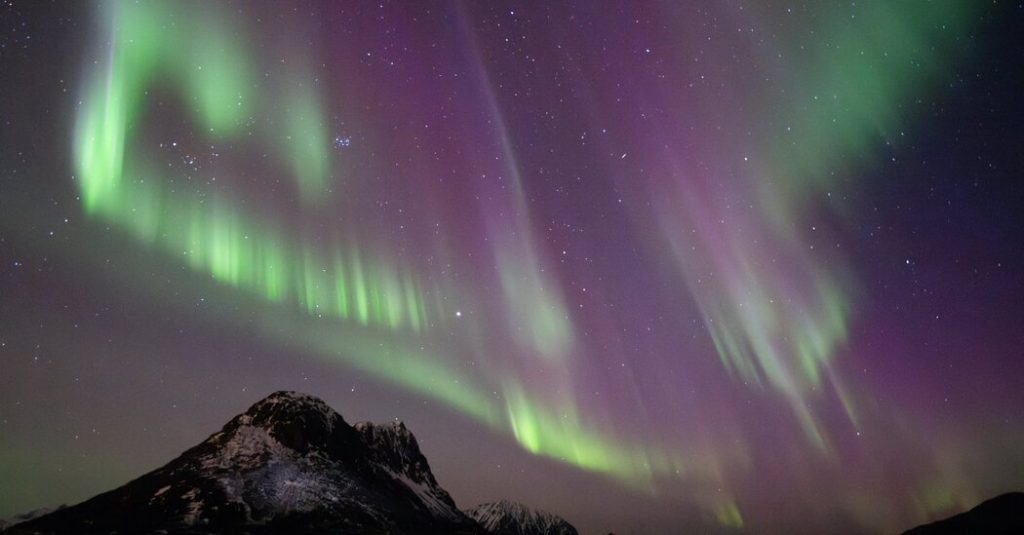There is an unusual amount of solar flare activity happening, which could result in a dazzling display of the aurora borealis or northern lights in the sky. However, whether or not you will be able to see this natural phenomena depends on your location and the weather conditions. In places with bright lights like cities, it might be hard to see anything. The Northeast is expected to be cloudy on Friday night, while the Midwest could have clear skies after a storm system moves through. The southern Plains and Rockies might have poor viewing conditions, while the West Coast should have relatively clear skies for good viewing. Some parts of the United States as far south as northern Alabama and Georgia could potentially view the lights, as well as areas in Scandinavia and Britain.
The National Oceanic and Atmospheric Administration’s Space Weather Prediction Center has issued a rare warning about a severe solar storm that is brewing. As a solar outburst reaches Earth, it could potentially cause electrical outages and interfere with navigation and communication systems. The solar activity could affect satellites orbiting close to Earth and infrastructure on the ground, leading to disruptions in navigation systems, radio communications, and the power grid. Despite these potential impacts, the warning is not directed towards the general public, so individuals can continue with their normal activities.
The solar storm is expected to reach Earth’s atmosphere by Friday afternoon or evening, with more significant effects than previously observed. The Space Weather Prediction Center reported that the current storm is classified as extreme, reaching a level 5 on the scale. Sunspots on the solar surface are causing this cluster of flares and ejections of material every six to 12 hours, resulting in shocks through the weekend. The last extreme solar event occurred in October 2003, causing power failures in Sweden and damaged transformers in South Africa.
It is advisable to look up at the skies on Friday night and over the weekend to potentially witness the aurora borealis or northern lights. If you are in a clear area, even south of the forecasted range, you can use your cellphone to capture images or videos of the lights, which may not be visible to the naked eye due to the camera sensor being more sensitive to the wavelengths produced by the aurora. Due to the intense solar activity, the lights could be visible in various regions of the United States, as well as in parts of Scandinavia and Britain.
In conclusion, the solar storm activity happening could result in a spectacular display of the aurora borealis or northern lights in the sky. The forecasted viewing conditions vary depending on location, with some areas in the United States and Europe having good potential for observing the lights. Despite the potential impacts on communication systems and the power grid, the general public is not required to take any special precautions. The solar storm is expected to continue through the weekend, with sunspots on the solar surface causing flares and material ejections that could result in shocks reaching Earth’s atmosphere.


